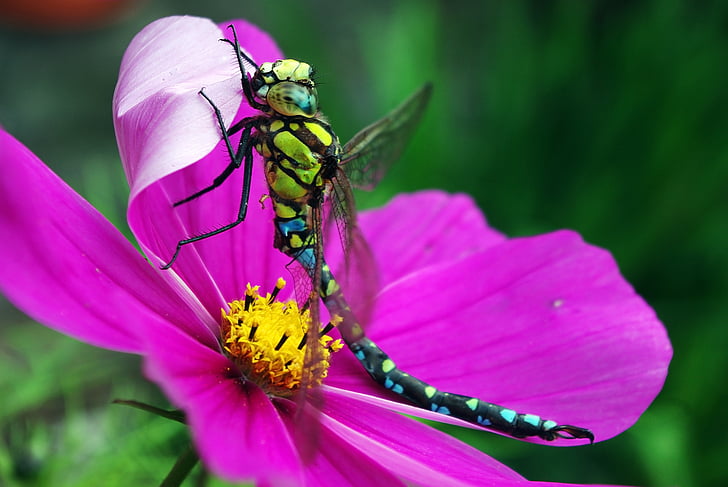Dragonflies are more than beautiful garden visitors. They are among nature’s most effective mosquito control agents. A single dragonfly can eat hundreds of mosquitoes in just one day, making it a powerful ally for every gardener who wants a pest-free, chemical-free yard.
Attracting dragonflies is a natural and eco-friendly way to reduce mosquito populations. The secret lies in creating a habitat that welcomes them, starting with the right plants and water features.

Why You Should Attract Dragonflies
Natural Pest Control: Dragonflies feed on mosquitoes, gnats, and other flying insects, keeping their populations in check naturally.
Eco-Friendly: Inviting dragonflies into your garden eliminates the need for harmful pesticides, protecting your plants and the environment.
Biodiversity Boost: Dragonflies support a balanced ecosystem and encourage other beneficial wildlife.
Aesthetic Beauty: Their shimmering wings and graceful flight bring movement, color, and life to your garden.
Best Plants to Attract Dragonflies
Dragonflies thrive in wet, sunny environments filled with native plants. They are especially drawn to areas near still or slow-moving water where they can breed, hunt, and rest. Here are some of the best plants to add to your garden to make it a dragonfly haven.
1. Water Lilies
Why They Work: Water lilies provide shade and shelter for dragonfly larvae living in ponds or water containers.
How to Use: Plant them in a pond or large water bowl. The floating leaves help keep the water cool and reduce algae growth.
2. Cattails
Why They Work: Cattails create natural habitats for dragonflies to perch, rest, and lay eggs.
How to Use: Grow them along pond edges or in damp garden corners.
3. Arrowhead Plants (Sagittaria)
Why They Work: These aquatic plants offer perfect breeding spots for dragonflies.
How to Use: Plant them in shallow water along the borders of ponds or fountains.
4. Pickerelweed
Why They Work: Pickerelweed attracts small insects that serve as food for dragonflies.
How to Use: Grow it in shallow water or moist soil surrounding your pond.
5. Wildflowers
Why They Work: Wildflowers draw the smaller insects that dragonflies love to hunt.
Top Choices: Coneflowers, black-eyed Susans, and daisies.
How to Use: Plant wildflowers in sunny patches of your yard for color and natural appeal.
6. Joe-Pye Weed
Why They Work: Joe-Pye weed attracts bees and butterflies, which in turn lure dragonflies.
How to Use: Grow it in moist soil near a pond or water feature.
7. Yarrow
Why They Work: Yarrow’s flat flower heads create the perfect resting and hunting perch for dragonflies.
How to Use: Plant it in sunny borders or flower beds.
8. Swamp Milkweed
Why They Work: Swamp milkweed thrives in wet areas and draws both dragonflies and pollinators.
How to Use: Add it to damp soil zones or beside ponds.
9. Meadow Sage
Why They Work: Meadow sage attracts small flying insects and offers perching spots for dragonflies.
How to Use: Grow it in bright, sunny areas or near water features.
10. Horsetail (Equisetum)
Why They Work: Horsetail thrives in wet environments and provides cover for dragonfly larvae.
How to Use: Plant horsetail near ponds, fountains, or consistently damp soil.
How to Create a Dragonfly-Friendly Yard
1. Add a Water Feature
Dragonflies lay their eggs in or near water. Install a pond, small fountain, or even a large water bowl. They prefer calm or slow-moving water where larvae can safely develop.
2. Provide Rocks and Perches
Dragonflies love to rest and warm their wings. Place flat rocks or tall stems around your garden so they have sunny perching spots.
3. Avoid Chemical Pesticides
Pesticides can harm dragonflies and the beneficial insects they depend on. Choose organic or natural pest control alternatives.
4. Keep Native Vegetation
Native plants attract local insect species that dragonflies feed on. Allow parts of your yard to grow naturally to support a healthy ecosystem.
5. Offer a Mix of Sun and Shade
Dragonflies enjoy basking in the sun but need cooler shaded spots too. Grow a variety of plants that provide both sunlight and cover.
6. Include Floating Aquatic Plants
Add floating plants like duckweed or water hyacinth. They offer breeding grounds and hiding spots for larvae.
Understanding the Dragonfly Life Cycle
To attract and sustain dragonflies, it helps to understand how they live.
Egg Stage: Females lay eggs on or just below the surface of the water.
Larva Stage: The larvae, also known as nymphs, live underwater for several months and feed on small aquatic insects.
Adult Stage: Once matured, adults emerge from the water, spread their wings, and begin feeding on mosquitoes and other pests.
Because most of their life cycle occurs in water, a pond or similar feature is essential if you want them to stay in your garden long-term.
The Benefits of Dragonflies in Your Garden
- Fewer Mosquitoes: One dragonfly can eat hundreds of mosquitoes each day, targeting both larvae and adults.
- Reduced Pests: They also feed on flies, gnats, and other bothersome insects.
- Healthier Ecosystem: Dragonflies promote balance in your yard, helping plants, pollinators, and people coexist peacefully.
- Natural Beauty: Their colors and movements add charm, grace, and a sense of wonder to any outdoor space.
Final Thoughts
Dragonflies are not just mesmerizing to watch. They are hardworking pest controllers that make your yard healthier and more enjoyable. By planting water-loving species like cattails and water lilies, mixing in wildflowers, and maintaining a small water feature, you can create the perfect dragonfly habitat.
With the right plants and a little patience, your garden will come alive with vibrant wings, balanced biodiversity, and fewer mosquitoes, all without a single drop of chemical spray.
